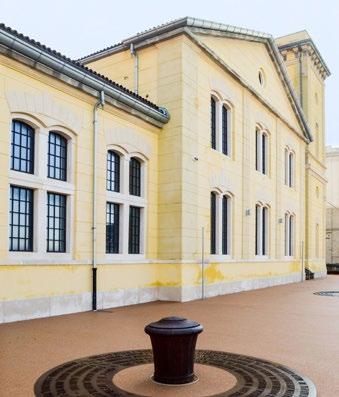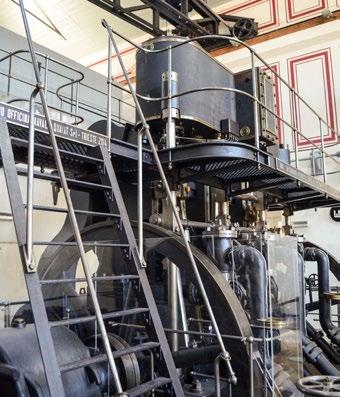
2 minute read
Futuro remoto: una Centrale da record
from number 1
Un filo rosso collega la Centrale Idrodinamica del Porto Vecchio di Trieste con il Tower Bridge, il celeberrimo ponte che collega la Torre di Londra con il quartiere di Southwark: nello splendido edificio dell’antica centrale elettrica triestina funzionava la stessa identica tecnologia, modernissima per l’epoca, che ancora oggi aziona il Tower Bridge. E non è l’unico singolare primato della Centrale Idrodinamica che, ancor prima che l’autosufficienza energetica divenisse un obiettivo per tante aziende del terzo millennio, già alla fine dell’Ottocento era in grado di garantire la totale autosufficienza energetica all’intero porto triestino. Di questi modelli di centrale nel mondo industrializzato sopravvivevano pochissimi esempi fino a qualche tempo fa e quella triestina è stata l’ultima a smettere di funzionare, esattamente trent’anni fa.

Advertisement
Nei suoi 97 anni di onorato servizio l’energia che ha erogato nell’area portuale è praticamente incalcolabile; per rendersi conto di quante strutture riuscisse a rifornire, basta pensare che le tubature in grado di collegare la centrale alle 100 gru e ai 50 montacarichi presenti in porto, erano lunghe oltre 6 chilometri. La centrale, completata ed entrata in funzione nel 1891, era dotata già all’epoca di un approccio tecnologico che numerose aziende e fabbriche –per non dire tutte– ricercano ancora oggi: il ciclo completo, ovvero avere il controllo totale delle diverse fasi di sviluppo e di lavorazione, nonché la fondamentale ricerca dell’autosussistenza energetica. La tecnologia che la centrale poteva vantare arrivava da Vienna e da Praga, vale a dire le due più grandi città dell’Impero Asburgico: la terza, en passant, era proprio Trieste. Questo monumento al progresso tecnologico del passato è stato restaurato qualche anno fa e riaperto al pubblico sotto forma di museo nel 2011. [ng]
Remote future: a record power station

A fil rouge connecting the hydrodynamic power station in Porto Vecchio (Trieste) and the London Tower Bridge, historic bridge linking the London Tower to the Southwark district. The impressive building of the former electric power station of Trieste employed the very same technology, pure avantgarde at the time, that moves the Tower Bridge today. And this is not the only record of Trieste’s hydrodynamic power station, which was able to provide entirely self-sufficient energy supply to the port of Trieste in the 19th century, hundreds of years before thirdmillennium companies would pursue the self-same goal. Power stations like this have been gradually demolished over the years in Italy; Trieste’s power station is the last of its kind and the one that lived the longest, officially stopping exactly thirty years ago. In its 97 years of honoured service, the station supplied an amount of energy to the port that is hardly quantifiable: suffice it to say that pipelines connecting it to over 100 cranes and 50 elevator hoists of the port stretched over more than six kilometres. The power station was inaugurated in 1891, a technological jewel envied even by modern companies today: its full cycle allowed for complete control of every development and work stage, and its full self-sufficiency made it a forerunner of its time. Technological advances put in place here were developed in Vienna and Prague, the then main hubs of the Habsburg Empire: the third one, for the record, was Trieste itself. This monument to the technological progress past was recently renovated, turned into a museum, and has been open to the public since 2011. [ng]






